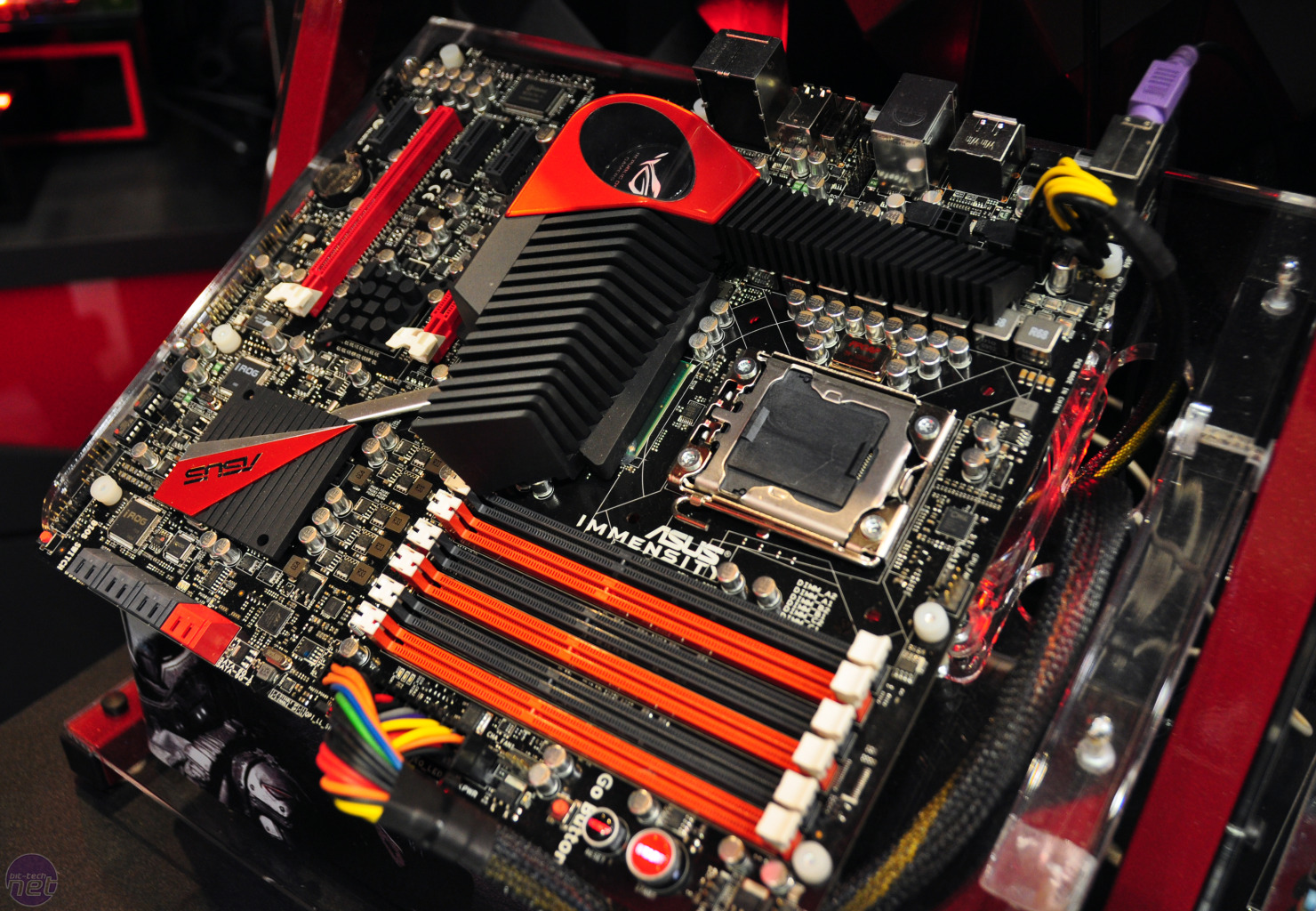As you’d expect, it’s a high-end LGA1366 board based on Intel’s X58 chipset. It also includes Lucid’s Hydra chip. Previously a favourite of MSI, the Hydra allows you to mix and match ATI and Nvidia GPUs in a multi-GPU system. While our initial testing was disappointing, Asus (and MSI) are both optimistic about its progress, and we’re keen to take another look.
That’s not all for the Immensity. It also has a GPU on-board, in the shape of one of the mid-range Radeon HD 5000-series chips. Asus’ thinking is that if you’re buying a board with the Hydra on it, you must be aiming to build a multi-GPU system – so why not provide the first GPU onboard? The downsides are that it reduces flexibility, but we can see where it’s coming from – if you already have a good graphics card (and they’re lasting longer and longer these days), an Immensity would be a one-stop way to get a multi-GPU PC.
The Immensity’s design also signals a return to what’s supposedly at the heart of the ROG brand – gaming performance. If the Hydra’s new drivers work as promised, then buying an Immensity would improve your games' performance.
There was some debate about the specific GPU Asus had chosen to integrate. We were told it was a Radeon HD 5770, but other journalists have been told it was a HD 5450. As the board we saw is a concept model, the specific model of GPU is clearly under debate - and the cooling on the board you see pictured was made of rubber, so it's obviously a non-working sample. Should the Immensity make it to production, we wouldn’t be surprised to see it change quite significantly from what's presented here.

That’s not all for the Immensity. It also has a GPU on-board, in the shape of one of the mid-range Radeon HD 5000-series chips. Asus’ thinking is that if you’re buying a board with the Hydra on it, you must be aiming to build a multi-GPU system – so why not provide the first GPU onboard? The downsides are that it reduces flexibility, but we can see where it’s coming from – if you already have a good graphics card (and they’re lasting longer and longer these days), an Immensity would be a one-stop way to get a multi-GPU PC.
The Immensity’s design also signals a return to what’s supposedly at the heart of the ROG brand – gaming performance. If the Hydra’s new drivers work as promised, then buying an Immensity would improve your games' performance.
There was some debate about the specific GPU Asus had chosen to integrate. We were told it was a Radeon HD 5770, but other journalists have been told it was a HD 5450. As the board we saw is a concept model, the specific model of GPU is clearly under debate - and the cooling on the board you see pictured was made of rubber, so it's obviously a non-working sample. Should the Immensity make it to production, we wouldn’t be surprised to see it change quite significantly from what's presented here.


Comment